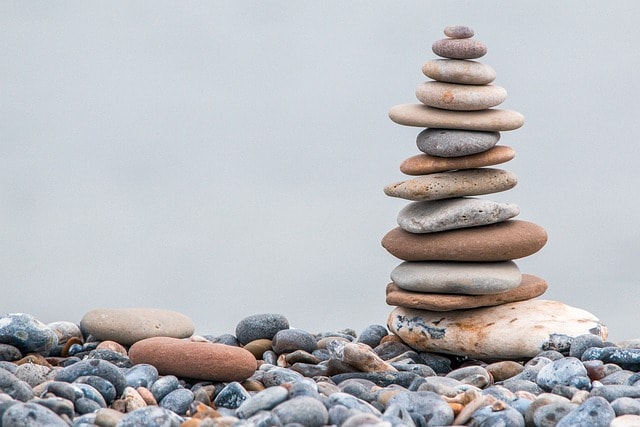
Embracing Simplicity: A Practical Guide to Living with Less
Top Tips for Living With Less: Find Joy in a Minimalist Lifestyle
Living with less means simplifying your life by reducing possessions, distractions, and financial burdens, leading to a better life. Embracing minimalism helps you gain more time, space, and peace. In this article, you’ll discover practical tips to start your minimalist journey and focus on what truly matters.
-
Living with less can reduce stress and mental clutter, helping you focus on what truly matters in life.
-
Embracing a minimalist lifestyle fosters a greater appreciation for your possessions and emphasizes experiences over material items.
-
Start small by decluttering one room at a time and involve family in the process to create a supportive environment.
Understanding the Concept of Living With Less
Minimalist living involves reducing possessions, mental clutter, and financial stress. It’s about creating a simple life to focus on what truly matters. With fewer belongings, you gain more space, time, and peace, leading to a more intentional lifestyle.
Holding onto numerous possessions often creates both physical and mental clutter, leading to anxiety and stress. Reducing daily commitments and simplifying life helps you pursue genuine desires with greater clarity. Minimalism aims to live intentionally and invest time and energy in what matters most.
Begin your minimalist journey by asking why you want to simplify your life. Understanding your reasons—whether to reduce stress, save money, or focus on relationships—will keep you motivated and guide you through the process.
Benefits of Owning Fewer Possessions
Owning fewer possessions reduces stress and distractions, clearing your mind to focus on what truly matters. This shift can increase happiness and life satisfaction. Eliminating unnecessary items frees up time and energy for meaningful activities.
Fewer possessions provide more freedom by shifting your focus from materialistic values to meaningful relationships and experiences. Without the burden of maintaining a big house or acquiring less stuff, you can build stronger connections and create a few things that lead to lasting memories, enhancing overall happiness and contentment, and allowing you to save more money.
Start Small: Declutter One Room at a Time as an Ongoing Process
Begin your minimalist journey with small, manageable steps to avoid feeling overwhelmed. By simplifying your life and reducing commitments, possessions, and distractions, you can create more room for meaningful connections, passions, and relaxation. Focus on one room at a time, dividing it into smaller sections to make the decluttering process more manageable and less daunting.
Use four designated boxes for sorting items: Sell, Donate, Toss, and Put Away. Start by clearing visible surfaces, then address hidden clutter in drawers and cupboards, ensuring a systematic decluttering process.
Organize the remaining items after decluttering to maintain a tidy environment and keep clutter at bay. Remember, minimalism is an ongoing process; regularly revisit each room to ensure it stays clutter-free.
Creating a Minimalist Home
Creating a minimalist home is an ongoing process that requires intentional decision-making and a willingness to let go of material possessions that no longer serve a purpose. Here are some tips to help you create a minimalist home:
-
Start with a Clear Vision: Define what minimalism means to you and what you want to achieve in your home. Having a clear vision will guide your decisions and keep you focused on your goals.
-
Declutter and Edit: Begin by getting rid of items that are no longer needed, broken, or useful. Keep only what brings you joy or serves a purpose. This step is crucial in creating a space that feels open and serene.
-
Simplify Your Space: Remove clutter and reduce visual noise to create a sense of calm and serenity. A minimalist home should feel like a sanctuary, free from the distractions of excess material possessions.
-
Use Multi-Functional Furniture: Choose furniture that serves multiple purposes, such as a storage ottoman or a desk with built-in shelving. This not only saves space but also adds functionality to your home.
-
Emphasize Natural Light: Natural light can make a space feel larger and more welcoming. Use sheer curtains, mirrors, and light-colored walls to reflect natural light and create a bright, airy atmosphere.

By focusing on these steps, you can create a minimalist home that reflects your values and provides a peaceful, clutter-free environment. Remember, this is an ongoing process, and it’s important to regularly reassess and refine your space to maintain its simplicity.
Embrace Minimalist Challenges
Participate in minimalist challenges to learn more about your personal needs and values. These challenges often involve discarding a specific number of items each day, gradually increasing the amount. This gamification of decluttering can enhance motivation and make the experience rewarding.
During a minimalist challenge, you'll become more aware of your possessions and how they relate to your lifestyle and values. You may even find you don't miss certain items after living without them for 30 days.
Involving friends and family members in these challenges can also make the experience communal and more enjoyable.
Create a Capsule Wardrobe
A capsule wardrobe is a minimalist collection of frequently worn clothes that mix and match well, reducing decision fatigue and saving time when getting dressed. A well-curated selection ensures your closet remains neat and tidy.
Focus on timeless and versatile clothing items when building a capsule wardrobe. Incorporate neutral colors to simplify mixing and matching, allowing for various outfit combinations with fewer clothes.
Pre-plan outfits from your capsule pieces to ease the transition into a smaller wardrobe, helping you feel confident and stylish while embracing minimalism.
Spend Money Wisely: Tips for Saving Money
A minimalist lifestyle encourages thoughtful purchasing, helping avoid impulse buys by focusing on necessary and enjoyable items, and saving money in the process. ‘No spend’ challenges, where you avoid non-essential purchases for a set period, help you recognize unnecessary spending and save money while understanding personal needs.
Mindful spending leads to better financial management and fulfillment. Prioritizing needs over wants enables more informed decisions and helps avoid the financial burden of impulse purchases.
Mindful Consumption for a Minimalist Lifestyle
Mindful consumption is a key component of a minimalist lifestyle. It involves being intentional about the things you buy and the impact they have on your life. Here are some tips for mindful consumption:
-
Ask Yourself If You Really Need It: Before making a purchase, ask yourself if you really need the item. Will it add value to your life or simply clutter your space? This simple question can help you make more intentional purchasing decisions.
-
Consider the Cost Per Use: Calculate the cost per use of an item to determine if it’s worth the investment. Items that you use frequently and for a long time offer better value than those that are rarely used.
-
Choose Quality Over Quantity: Invest in high-quality items that will last longer and perform better. This not only saves money in the long run but also reduces the need for frequent replacements.
-
Avoid Impulse Buys: Take time to think about a purchase before making it. Avoid buying on impulse or out of boredom. This helps you avoid accumulating unnecessary items that don’t truly serve a purpose.
-
Practice Window Shopping: Window shopping can be a fun way to browse and explore without making a purchase. It allows you to enjoy the experience of shopping without the financial commitment or the addition of more stuff to your home.
By practicing mindful consumption, you can align your purchasing habits with your minimalist values, leading to a more intentional and fulfilling life.
Focus on Experiences Over Things
Focusing on creating meaningful experiences rather than accumulating possessions leads to a more fulfilling life. Experiences create lasting memories, while physical items lose value over time. Fewer possessions free up finances, time, and energy for meaningful activities.
Spending on memorable experiences often enhances relationships and personal growth. Family vacations, concerts with friends, or workshops to learn new skills enrich your life in ways only things physical things cannot in the past year.
A minimalist mindset cultivates values like gratitude, contentment, and intentional living, crucial for fully embracing minimalism and reaping its benefits.
Go Paperless
Reducing paper clutter is key to a minimalist lifestyle. Digitize documents, unsubscribe from unnecessary mailing lists, and manage bills electronically to eliminate all the clutter. Digital storage allows quick access from any device, reducing physical clutter. Many people who embrace a minimalist lifestyle hate clutter.
Mobile scanning apps streamline converting paper documents into digital files immediately upon receipt. Organizing these files in a dedicated app like Evernote enhances efficiency and retrieval. Regular backups protect against data loss and ensure document security.
A paperless lifestyle minimizes clutter and facilitates easier access and better organization of documents, helping maintain a tidy and efficient workspace.
Appreciate What You Have
Embracing minimalism enhances your understanding of the value of worldly possessions, fostering better appreciation for what you own. Choosing quality over quantity increases gratitude, reducing the urge to shop and boosting your sense of abundance.
Minimalist challenges foster gratitude for what you already possess. As you declutter and simplify, you’ll realize that having fewer possessions is beautiful, bringing joy and contentment into your life.
Communicate Your Minimalist Goals
Creating a support system is crucial when embracing minimalism, as not everyone will be on board. Transparent conversations about your goals can alleviate isolation and foster mutual understanding with loved ones.
Involve family and friends in discussions about minimalism to promote collaborative decluttering. Expressing your aspirations may inspire others to reflect on their consumption habits and join you in living more intentionally.
Minimize Digital Clutter
Minimizing digital clutter is key to a minimalist lifestyle. Turning off phone notifications reduces distractions and enhances concentration. Keeping your phone out of sight during focused activities further improves task focus.
Use apps that promote focus and set specific times for checking email to prevent constant interruptions. Regularly declutter your digital space by organizing files and deleting unnecessary content to maintain a tidy, efficient digital environment.
Borrow Instead of Buying
Borrowing is a cost-effective way to access items without the financial burden of purchasing. It helps you avoid clutter from rarely used possessions and lets you try products before investing in them.
Borrowing promotes sustainability and fosters community engagement. Sharing resources with friends and neighbors strengthens relationships and builds a sense of community.
Live Below Your Means
Living below your means involves living frugally, not overspending, and minimizing financial stress. It helps see money as a tool rather than a source of anxiety, leading to more savings and investment opportunities.
Frugal living helps save money and build an emergency fund. Tracking daily spending frequency can identify and reduce unnecessary . A simple budgeting framework can lead to substantial savings without feeling deprived.
Redirect financial savings from owning fewer possessions towards meaningful experiences. This approach aligns with minimalism and enhances overall life satisfaction.
In summary, embracing a minimalist lifestyle involves reducing physical and digital clutter, spending money wisely, and focusing on meaningful experiences. By owning fewer possessions, you can reduce stress, save money, and create a more intentional life. Remember, minimalism is an ongoing process, and it's essential to regularly revisit and refine your approach.
We hope this guide has inspired you to start living with less and find joy in a minimalist lifestyle. Embrace the journey, and you'll discover that less truly is more.
Maintaining a Minimalist Lifestyle
Maintaining a minimalist lifestyle requires ongoing effort and commitment. Here are some tips to help you stay on track:
-
Regularly Review and Edit: Regularly review your belongings and edit out items that no longer serve a purpose. This helps prevent clutter from accumulating and keeps your space organized.
-
Set Boundaries: Set boundaries around your consumption habits, such as limiting your spending or avoiding certain types of purchases. These boundaries help you stay focused on your minimalist goals.
-
Practice Gratitude: Focus on the things you already have, rather than what you don’t have. Practicing gratitude can shift your mindset and help you appreciate the value of your current possessions.
-
Find Joy in Experiences: Focus on experiences, such as travel, learning, or spending time with loved ones, rather than accumulating material possessions. Experiences create lasting memories and bring more joy than material things.
-
Seek Support: Surround yourself with people who support and encourage your minimalist lifestyle. Having a support system can make it easier to stay committed to your goals and navigate challenges.
By incorporating these practices into your life, you can maintain a minimalist lifestyle that brings more joy, freedom, and fulfillment.
How to train yourself to live with less?
Start by identifying what truly matters to you and gradually let go of the less important things. This conscious approach not only creates more space in your life but also reduces stress and enhances your effectiveness.
How to live with less and be happy?
To live with less and be happy, focus on what truly matters to you and practice gratitude daily. Declutter your space and manage your exposure to temptations so you can appreciate what you have.
What does living with less mean?
Living with less means not just reducing physical belongings, but also minimizing anxiety, tasks, and financial burdens. It's about creating a simpler, more peaceful life overall.
What is the first step to starting a minimalist lifestyle?
The first step to starting a minimalist lifestyle is to understand your personal reasons for wanting to simplify. From there, you can begin decluttering one room at a time and build on that effort.
How can I create a capsule wardrobe?
To create a capsule wardrobe, choose versatile and timeless pieces that you can easily mix and match. Keeping your closet organized and limiting your clothing will help you maintain a simple and stylish selection.
Conclusion: Embracing a Simple Life
Embracing a simple life is a journey, not a destination. It requires ongoing effort and commitment, but the rewards are well worth it. By creating a minimalist home, practicing mindful consumption, and maintaining a minimalist lifestyle, you can experience more joy, freedom, and financial freedom. Remember, it’s not about depriving yourself of things you love, but about living intentionally and focusing on what truly adds value to your life.
By embracing a simple life, you can:
-
Save money and achieve financial freedom
-
Reduce stress and anxiety
-
Increase joy and happiness
-
Focus on what truly matters
-
Live more intentionally and authentically
So, take the first step today and start embracing a simple life. You never know the freedom and joy that awaits you.
%20512x512%20google%20store%20app%20logo%20SEPT%2024%2c%202025%20(4)-png.png?width=51&height=51&name=USE!!%20)%20512x512%20google%20store%20app%20logo%20SEPT%2024%2c%202025%20(4)-png.png)



